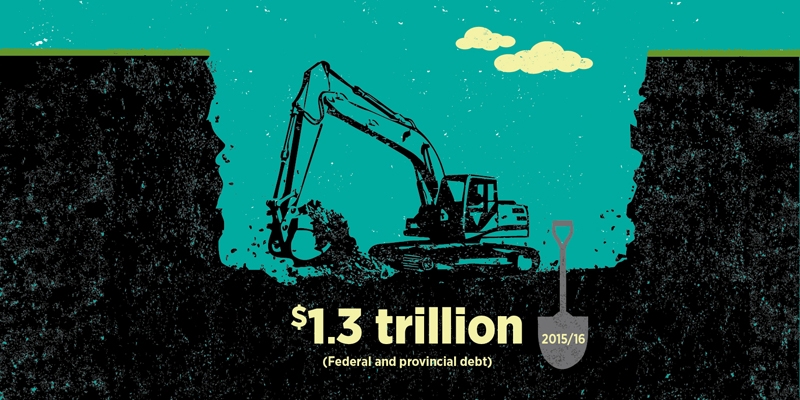The Cost of Government Debt in Canada, 2016

Budget deficits and increasing debt are key fiscal issues as the federal and provincial governments prepare to release their budgets this year. Combined federal and provincial net debt has increased from $834 billion in 2007/08 to a projected $1.3 trillion in 2015/16. This combined debt equals 64.8% of the economy or $35,827 for every man, woman, and child living in Canada.
Debt accumulation has costs. One major consequence is that governments must make interest payments on their debt similar to households that pay interest on borrowing related to mortgages, vehicles, or credit card spending. Spending on interest payments consumes government revenues and leaves less money available for other important priorities such as spending on health care and education or tax relief.
Canadian governments (including local governments) collectively spent an estimated $60.8 billion on interest payments in 2014/15. That works out to 8.1% of their total revenue that year. To further put the amount spent on interest payments in perspective, it is more than what is spent on pension benefits through the Canada and Quebec Pension Plans ($50.9 billion), and approximately equal to Canada’s total public spending on primary and secondary education ($62.2 billion, as of 2012/13, the last year for which we have finalized data).
Authors:
More from this study
Subscribe to the Fraser Institute
Get the latest news from the Fraser Institute on the latest research studies, news and events.




